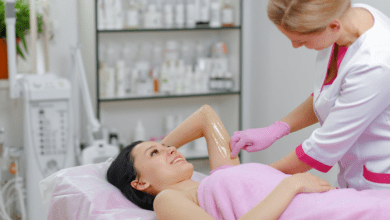
Choosing the right beauty products can often feel overwhelming, given the vast array of options available. Nikol Beauty emphasizes understanding our unique skin type and needs to make this process simpler and more effective. In this guide, we’ll explore how to select products that enhance skin health and appearance, offering practical steps to ensure every choice is informed and tailored specifically to us.
Understanding Your Skin Type
To choose the best beauty products, we first need to understand our skin type. This foundational step is crucial because each type has different needs and concerns, which directly influences product selection.
Identifying Common Skin Types
Most of us fall into one of four primary skin types: normal, dry, oily, or combination.
Normal Skin: Balanced moisture levels, few imperfections.
Dry Skin: Often feels tight or rough, may be flaky or itchy.
Oily Skin: Shiny appearance with enlarged pores, prone to acne.
Combination Skin: Oiliness in some areas (like the T-zone) and dryness in others.
Understanding which category we fall into can help us navigate product choices more effectively.
Importance Of Skin Type In Product Selection
Once we identify our skin type, we can focus on formulations specifically designed to cater to those needs. For instance, someone with dry skin should seek hydrating products, while those with oily skin might benefit from non-comedogenic options that won’t clog pores.
Key Ingredients For Different Skin Types
Ingredients play a pivotal role in how well our chosen products will perform on our skin. Hence, knowing the right components for our specific skin type is invaluable.
Essential Ingredients For Dry Skin
People with dry skin should look for products containing:
Hyaluronic Acid: A powerhouse for hydration.
Glycerin: Draws moisture into the skin’s surface.
Ceramides: Helps restore the skin barrier, preventing moisture loss.
Best Ingredients For Oily Skin
For oily skin, the focus should be on mattifying and balancing products. Ideal ingredients include:
Salicylic Acid: Helps clear pores and reduce acne.
Niacinamide: Reduced oil production and minimises pores.
Clay or Charcoal: Absorbs excess oil and impurities.
Suitable Components For Sensitive Skin
Sensitive skin requires gentle formulations. Look for:
Aloe Vera: Known for its soothing properties.
Calendula Extract: Calms irritation and redness.
Fragrance-Free Formulations: Avoid potential irritants.
Finding Products That Suit Your Skin Concerns
After understanding our skin type, we can investigate into our specific skin concerns to find the most effective products. Each concern necessitates a tailored approach.
Acne-Prone Skin Solutions
For those of us grappling with acne, we should seek products containing:
Benzoyl Peroxide: A common treatment for acne.
Retinoids: Helps cell turnover and prevents clogged pores.
Products For Ageing Skin
As we age, our skin requires extra care. Look for:
Peptides: Promote collagen production.
Vitamin C: Brightens skin and reduces signs of ageing.
Retinol: Minimises fine lines and enhances texture.
Hydration And Moisture-Boosting Products
We should consider products rich in hydrating ingredients, especially during dry seasons:
Humectants: Like glycerin, which attracts moisture.
Facial oils: To lock in moisture and nourish the skin.
Understanding Product Labels And Claims
Deciphering product labels can sometimes feel like learning a new language. But, it’s crucial for making informed decisions.
Decoding Ingredients Lists
Product labels typically list ingredients in descending order by volume. When searching for key ingredients, we should ensure they appear towards the top of the list. This indicates a significant presence in the formulation. Look for ingredients that our skin needs, but also be cautious of harmful additives like parabens and sulphates.
Recognising Marketing Phrases
Terms like “all-natural” or “dermatologist-tested” can be misleading. We should exercise caution: often, these phrases don’t guarantee product effectiveness or suitability for our skin type.
Reading Reviews And Recommendations
Before investing in new products, reading reviews can provide valuable insights into their effectiveness and reliability.
The Importance Of Real User Feedback
User reviews can highlight how well a product performs for different skin types and concerns. We should prioritise personal experiences, particularly those from individuals with similar skin types or issues as ours.
How To Find Trustworthy Sources
Reliable sources for reviews include beauty blogs, enthusiast forums, and reputable beauty retailers’ websites. They often share detailed insights and comparisons that can help steer us in the right direction.
Testing New Products Safely
Before fully integrating any new product into our routine, it’s vital to test it safely to avoid adverse reactions.
Patch Testing Methods
A patch test is simple: apply a small amount of the product to a discreet area of your skin, like your wrist or behind your ear, and wait 24 hours. If there’s no adverse reaction, we can feel more confident about using it on our face.
Knowing When To Discontinue Use
Even with the best products, reactions can still happen. It’s important for us to be vigilant about our skin’s response to new products. If we experience redness, peeling, or any other adverse symptoms, it’s wise to discontinue use immediately.
Conclusion
Choosing the best beauty products for our skin involves a blend of understanding our skin type, recognising key ingredients, and paying attention to product claims. By following these steps and being mindful of how our skin reacts, we can curate a beauty routine that not only enhances our beauty but also keeps our skin healthy. Let’s embrace a thoughtful approach to beauty, ensuring our choices contribute positively to our skin’s overall wellbeing.




